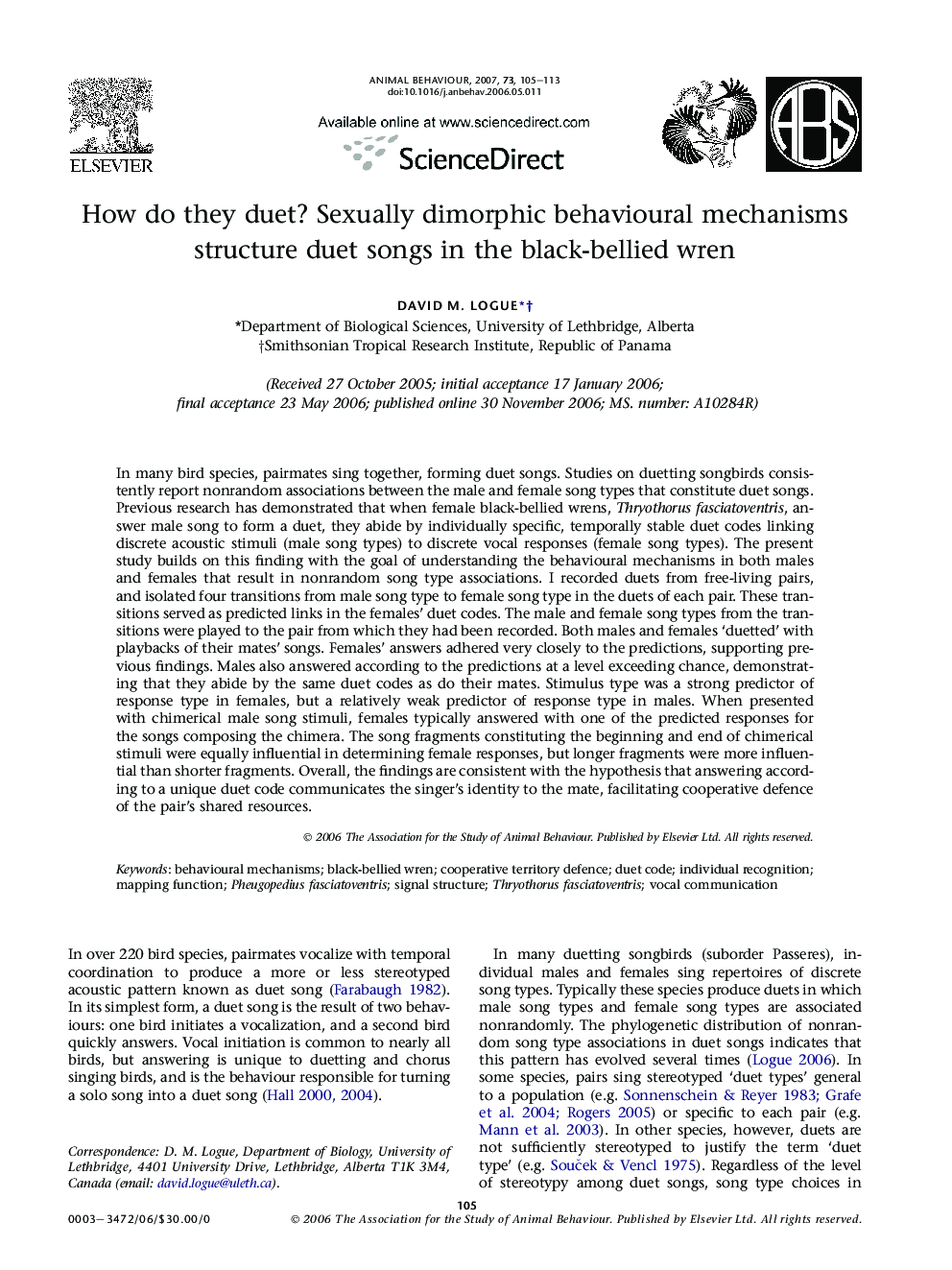| کد مقاله | کد نشریه | سال انتشار | مقاله انگلیسی | نسخه تمام متن |
|---|---|---|---|---|
| 2418332 | 1104343 | 2007 | 9 صفحه PDF | دانلود رایگان |

In many bird species, pairmates sing together, forming duet songs. Studies on duetting songbirds consistently report nonrandom associations between the male and female song types that constitute duet songs. Previous research has demonstrated that when female black-bellied wrens, Thryothorus fasciatoventris, answer male song to form a duet, they abide by individually specific, temporally stable duet codes linking discrete acoustic stimuli (male song types) to discrete vocal responses (female song types). The present study builds on this finding with the goal of understanding the behavioural mechanisms in both males and females that result in nonrandom song type associations. I recorded duets from free-living pairs, and isolated four transitions from male song type to female song type in the duets of each pair. These transitions served as predicted links in the females' duet codes. The male and female song types from the transitions were played to the pair from which they had been recorded. Both males and females ‘duetted’ with playbacks of their mates' songs. Females' answers adhered very closely to the predictions, supporting previous findings. Males also answered according to the predictions at a level exceeding chance, demonstrating that they abide by the same duet codes as do their mates. Stimulus type was a strong predictor of response type in females, but a relatively weak predictor of response type in males. When presented with chimerical male song stimuli, females typically answered with one of the predicted responses for the songs composing the chimera. The song fragments constituting the beginning and end of chimerical stimuli were equally influential in determining female responses, but longer fragments were more influential than shorter fragments. Overall, the findings are consistent with the hypothesis that answering according to a unique duet code communicates the singer's identity to the mate, facilitating cooperative defence of the pair's shared resources.
Journal: Animal Behaviour - Volume 73, Issue 1, January 2007, Pages 105–113